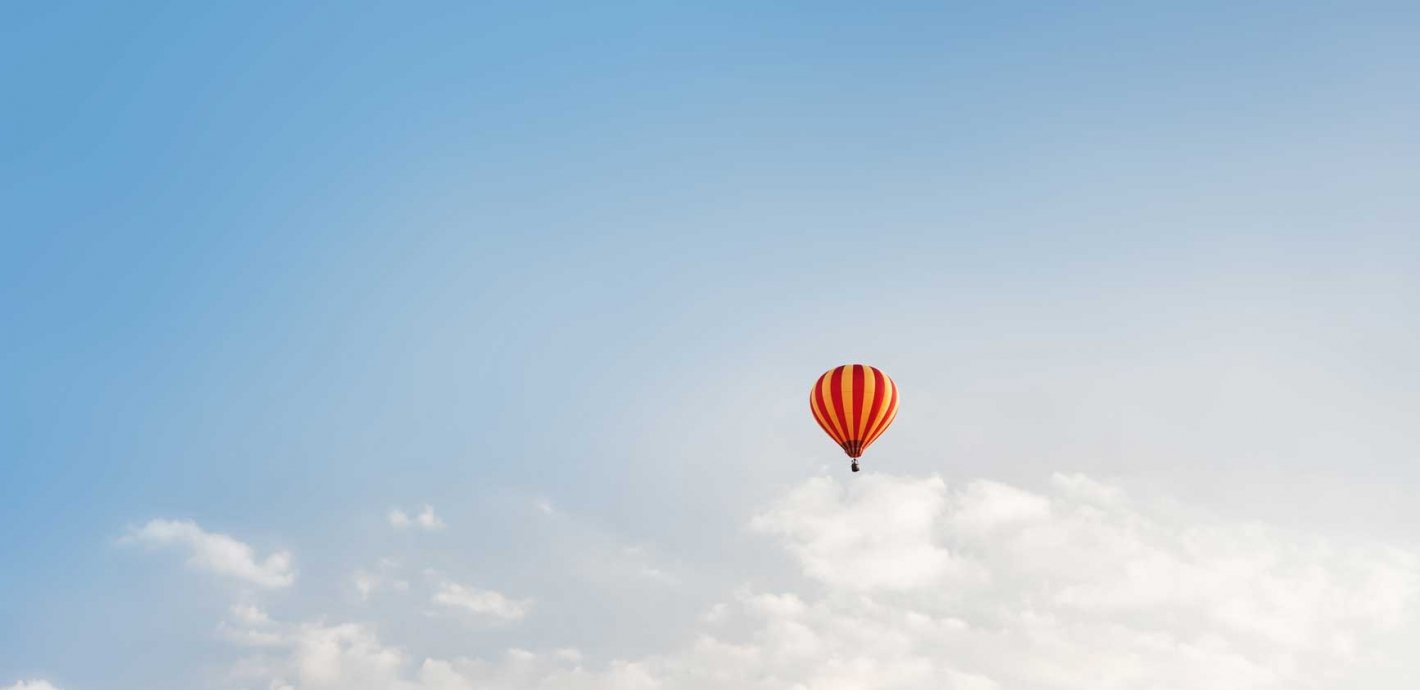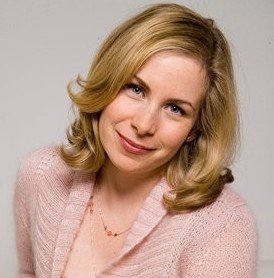Although I’ve been a working writer for almost three decades, almost every time I sit down to write something, I turn into Stuart Smalley’s evil twin, flogging myself with the anti-affirmation, “I’m not good enough, I’m not smart enough, and, gosh darn it, people aren’t going to like this.”
I’m not the only creative person who finds themselves scaling a mountain of fear and hesitancy every time they get cracking on a new project. (I wish I could say I take comfort in this, but I don’t.) I’ve met many actors, musicians, authors, artists, graphic designers—and countless other people who aspire to be—who are as similarly tortured. For instance, when I interviewed Reese Witherspoon about her recent acclaimed performance as a recovering heroin and sex addict in Cheryl Strayed’s memoir-turned-movie Wild, the Oscar winner confided that she was almost immobilized by insecurity as the first day of filming approached.
“Every time I start a new [movie], I’m terrified,” Witherspoon said. “I want to throw up; sometimes I have panic attacks. You get that pit in your stomach, like you’re not going to be able to do it, and that you’re going to be asked to do something you can’t accomplish.”
And when I talked to John Taylor, bass player for Duran Duran, he said that following all of his mega success as a member of one of the biggest bands of the 80s, he spent years saddled by anxiety that he “wasn’t the real thing.”
“I remember becoming really aware of all of those session musicians and a little ashamed of my own playing style,” he says. “It almost made me want to go and hide away. One of the worst things you can get is self-conscious.”
Turns out, Eat Pray Love author Elizabeth Gilbert—the worldwide-bestselling author of the beloved travel and self-discovery memoir (not to mention its followup, Committed, and the acclaimed novel The Signature of All Things)—has also spent years quelling her own self-doubt demons and coaxing out her creative side. In the process, she’s become something of a expert. In 2009, she gave a TED talk on finding “Your Elusive Creative Genius”; at 10 million views, it ranks as one of the most watched of all time. Then earlier this year, she took to the road with Oprah on the mogul’s The Life You Want Weekend tour, addressing audiences about the importance of daring to be bold, charting your own life course, and learning to ignore your fears.
“Your fear is the most boring thing about you,” she said during a monologue that I watch on YouTube for inspiration whenever I’m desperate to get a magazine cover story or book proposal over the finish line. “Moreover, these are exactly the same fears that everyone who has ever finished a book—or created anything—feels. In other words, your fears are just regular old mass-produced, made-in-China, sold-at-Walmart fears—nothing fine or precious or artisanal about them.” And furthermore: “Fear only ever tells you one thing: stop. Whereas creativity, courage, and inspiration only ever want you to go. I want us all liberated from the path of fear, for many reasons — but mostly because it makes for such a damn boring life.”
To that end, Gilbert has published a new book, Big Magic: Creative Living Beyond Fear, a go-and-get-it guide that allows us a glimpse into her own work process, as well as her thoughts on how ideas and inspiration are born and take shape. It also serves as a reminder that, although she’s sold 12 million copies of Eat Pray Love, Gilbert is the same as us: She has a constant companion in fear. The difference is, she’s learned to accept its omnipresence and gets on with the business of creating her art (in this case, writing) anyway. Below, some of her Magic mantras and tips that I’ve found to be particularly effective.
“If you are alive, you are a creative person.”
Reading Big Magic, I often found myself amazed by how Gilbert had managed to take up residency in my head and unpack so many of the writing-related anxieties I had stored up there. For example, there’s that constant nagging feeling that I’m a fraud. It doesn’t matter that I have evidence to the contrary in the form of years of published articles, I still often ask myself how I have the audacity to think I can accomplish whatever it is I’m about to do. The entire time I was writing my 80s music oral history, Mad World, I’d pick up one music book after another and marvel at the work of “real” authors, something I never imagined I could ever truly be. Apparently, this is a popular fear among creative types (see John Taylor’s stress re: not being “the real thing”). But in reminding us that all us modern-day humans share an ancestry of makers—“decorators, tinkers, storytellers, dancers, explorers, fiddlers, drummers, builders, growers, problem-solvers and embellishers”—Gilbert stresses that anyone with a pulse has it in their DNA to be creative. “The guardians of high culture will try and convince you that the arts belong only to a chosen few,” she writes, “but they are wrong and they are also annoying.” The next time we are falling prey to the false belief that we have no right to call ourselves creative, “for heaven’s sake, at least defend yourself!” Gilbert says. “Defending yourself as a creative person begins by defining yourself. Stand up tall and say it aloud: ‘I’m a writer.’ ‘I’m a singer.’ ‘I’m a gardener.’ ‘I’m a dancer.’ ‘I’m an inventor.’ Hearing this announcement, your soul will mobilize accordingly.”
“Creativity is a path for the brave, but it is not a path for the fearless.”
Gilbert has come to accept that creativity and fear are “conjoined twins”: wherever the former goes, the latter is right there beside it. “If your goal is to be fearless, then I believe you’re on the wrong path,” she says, “because the only truly fearless people I’ve ever met were straight-up psychopaths and a few exceptionally reckless three-year-olds.” Plus, evolution has programmed our fear to protect and steer us away from situations with uncertain outcomes, for “fear hates uncertain outcome.” In other words, our fear is here to stay, so Gilbert suggests we stop spending so much time and energy trying to get rid of it. “The less I fight my fear, the less it fights back,” she writes. “If I can relax, fear relaxes too.” Also, stop letting fear fool you into thinking it has superhero powers; in truth, the only power it has is the one you think it has. Whenever fear bullies you, remind it that it’s just False Evidence Appearing Real.
“You’re not required to save the world with your creativity.”
“You’re always out for the gold star,” says my friend and Mad World collaborator, Jonathan Bernstein, who never seems to have any problem writing his television critiques and celebrity profiles. He consistently churns out brilliant, often cackle-out-loud copy, and in no time flat. As for me, a.k.a. Ms. Perfect, Ms. A+, I write like my life depends on it—which, let’s face it, it doesn’t. Says Gilbert: “In the world in which you and I live”—i.e., not modern-day Iraq, Nigeria or North Korea—“the stakes of our creative expression are low.” As the songwriter Tom Waits once told Gilbert: “The only thing I really do is make jewelry for the inside of people’s minds. That’s all.” So while creative failure may bruise our ego, don’t mistake that for real danger. And by the way: What exactly is creative failure anyway? So we didn’t sell the painting or get that part in the play—that doesn’t mean we failed. By being creative at all, we have succeeded. Which leads me to the next point…
“Try saying this: I enjoy my creativity.”
When you’re staring down a deadline or have run into a seemingly impassable creative roadblock, fear suddenly morphs into Godzilla, roaring “I told you so!” causing you to meekly sigh: “You’re right—I should’ve never taken this this on.” Fear wants you to believe that your creative work is a drag and a chore; it would like nothing more for you to give in and give up. Don’t! “I started telling myself that I enjoyed my work,” Gilbert says. “I proclaimed that I enjoyed every single aspect of my creative endeavors—the agony and the ecstasy, the success and the failure, the joy and the embarrassment, the dry spells and the grind.” Doing such a thing may seem radical. After all, we creative types like to hem and haw—where do you think the term “tortured artist” comes from? If you find yourself going down this dismal path, that’s when you need to, in the words of director Werner Herzog (whom Gilbert quotes in the book): “Quit your complaining and get back to work.” Because nothing thwarts fear like putting your nose to the grindstone. Although Gilbert’s book is called Big Magic, neither spells, prayers, nor finger snaps are going to help any of us reach our artistic goals. For Reese Witherspoon, it took seeing a hypnotist to enable her to give such a naked (both figurative and literal) performance in Wild. For John Taylor, it took finding a champion in “Uptown Funk” producer/musician Mark Ronson to help him recapture his bass-playing prowess. For me, it takes the daily heeding of the William Wordsworth quote I have taped to my computer screen: “To begin, begin.”









Comments (0)